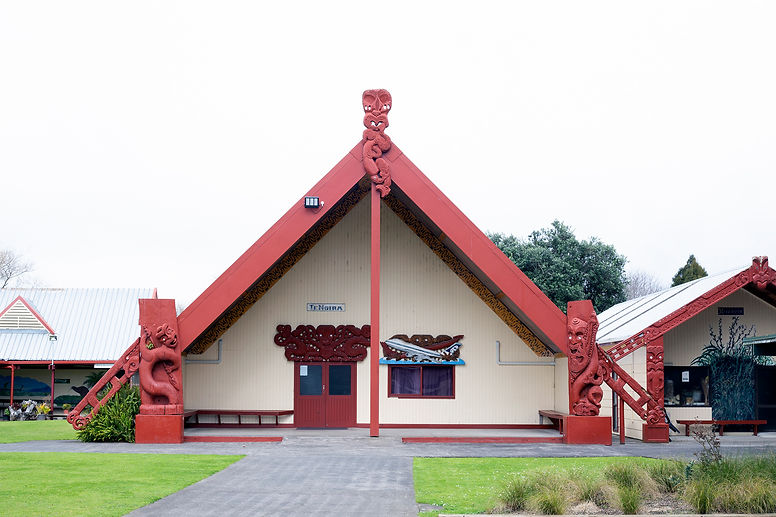

Our History
Since Maori inhabited Papakura their dreams have always been for a marae. The actual building project commenced in 1979 with the construction of the Dining Hall and Ablution Block. The marae complex has evolved to its present stage essentially through voluntary labour expended over the years.
Within the strong groundswell of interest in Maori cultural and social activities, many individuals and groups are gravitating to the marae for knowledge of their past. Today the Treaty of Waitangi, and the fostering of the ideals of partnership are being enhanced with establishment of the marae in this part of South Auckland.
Already, the Papakura Marae encourages discussions, debate and frankness which have been helpful in increasing understanding and awareness of Maori issues in its background of values, beliefs and history. The marae embraces and encourages visits by people of all backgrounds.

Our Flag
“Te tohu tuitui i te tangata me nga iwi katoa ki raro o te whanaungatanga.”
The Papakura Marae logo grew out of a need to bring together Maori and diversity of interest groups under a singular kaupapa to establish a marae complex in Papakura responsive and responsible to their individual and collective needs of a community. The theme for a logo fusing together the social, cultural and spiritual needs emerged in 1973.

TE PUNGA
This is the anchor stone that held the stability of waka and attendant crew together; implying that crew need to work together to reach the desired destination for each member to work through unity, cooperation a single-mindedness of purpose. At the top of Te Puna is the koru pattern representing the journey or whakapapa of the people of Tainui and those who have made Papakura their home, a journey which made its beginnings in Te Kore, Te Po and into Te Ao Marama. From the edges of the koru is the emergence of eight stems which flow down into the source of those who arrived in waka across uncharted blue waters. Other migrants including people of European nations arrived in various forms of waka. This binding together is captured in the heralding calls of the tui, “ ... tuitui tui-a.”
POUTAMA
The strivings of one person or the many for excellence in life, so the staircase represents the challenges faced with a particular emphasis on the role of the marae to provide a sense to belong, to learning, to succeed, to change and to grow. This assent also symbolise the history of our tupuna in whakapapa or narrative stories of a colourful past. Implicit in the climb is the need to step back (or down the Poutama) to ensure that younger generations are not left out but are well infused with the knowledge and wisdom of the past. They can reach for the stars and live in a new world but be equally enriched by their cultural past.
PAPAKURA
There was in centuries past considerable volcanic activity in the Tamaki Isthmus after Mataaho, the fiery giant (atua) left us with thirty-nine volcanoes. This action caused the flat earth around to burn and glow, hence the name Papa-kura (papa-the flat land and kura-the reddish glow, burning but it is also the word for learning and for everything valued). Our interpretation: Papakura - land is a treasured gift, an heirloom. Ranginui is the Sky father above, and Papatuanuku is the Earth mother below.
PAPATUANUKU
Papa in short. We are born of the Earth, nurtured by the Earth and we ultimately return to Earth. We share Earth with all creatures living in unison. Maori regard Papatuanuku as kaitiaki or the nurturer and keeper of the soul, the mind and the body and so we as humans cannot survive without nature. Maori stories are littered with prophetic connections to Papatuanuku and Ranginui.
MANAWA
The heart - the uninterrupted connection with nga tipuna is represented in the parallel lines below the punga. These lines symbolise the energy for building lasting relationships for personal, community and a national sense if identity. This is the heart of a person, people or a nation with a pulsating vibrancy that starts in Hawaiki to reside here in Aotearoa New Zealand and here in Papakura.